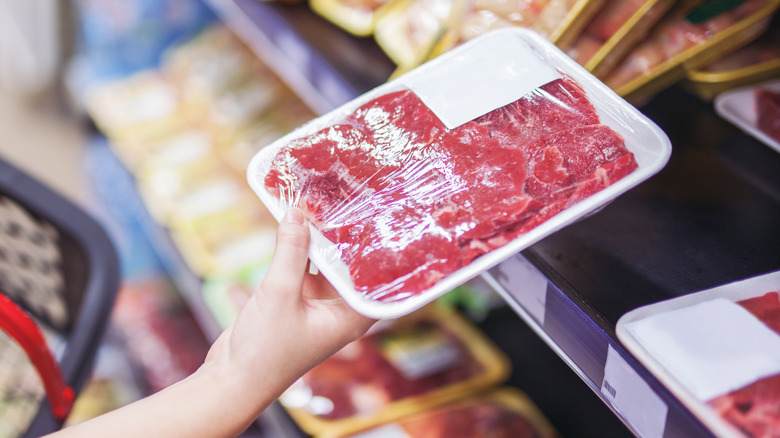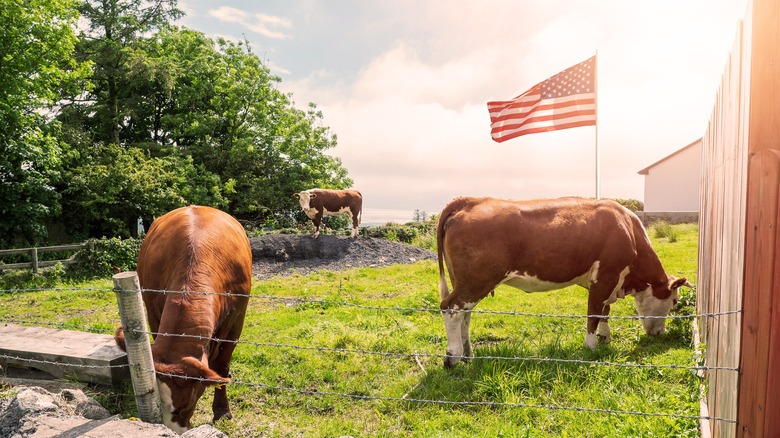The USDA Is Changing How Our Meat Is Labeled. Here's Why It Matters
Americans have an undeniable affinity for meat. In 2022, despite inflation impacting the price of cutlets and deli slices, the average person in the United States ate 227 pounds of meat, which is nearly 30 pounds more than the weight of, coincidentally, the average man.
The American meat industry is big business, but with big business comes stringent regulations — enter the United States Department of Agriculture. The USDA has incredibly detailed lists of rules pertaining to the sale and production of different meat and dairy products. Despite these thorough regulations, debates over the specifics of agricultural legislation are a constant fixture of the meat and dairy sphere. The dairy industry is declaring war over the definition of milk, arguing that plant-based alternatives shouldn't be able to use the term. In some parts of the U.S., raw, unpasteurized milk is banned. Recently, the USDA focused its attention on sourcing claims in the meat production industry and has come up with some suggestions geared toward improving transparency between businesses and consumers.
How to tell if your meat is American made
Meat and poultry labels can mislead, and sometimes deceive, customers. In early March, the USDA announced a new proposal that would hold meat manufacturers accountable for their claims of domestic operation. Essentially, the proposal states that every step of meat production, from birth to processing, must take place in the United States for a product to officially bear a 'Made in the USA' label.
The proposal itself may be new, but the USDA has been investigating sourcing claims in the meat industry for the past couple of years. Senator Mike Rounds of South Dakota Senator Mike Rounds, in conjunction with Secretary of Agriculture Tom Vilsack, put forth similar legislative suggestions as far back as 2019 and has continued to push toward this current form of the proposal.
Under the proposed rule, slapping a 'Made in the USA' label on your product wouldn't need to be pre-approved by the USDA. However, the regulatory agency is the only channel through which you would be able to get said label verified.

